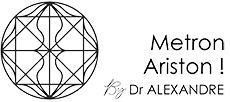Double Chin: Common Causes & How to Prevent It
What is a Double Chin?
A double chin, also known as submental fat, is a common condition that occurs when a layer of fat forms below your chin. It is often associated with weight gain, but you don’t have to be overweight to have one. The anatomy of a double chin involves the accumulation of fat in the submental space, which can be influenced by various factors including genetics, age, and lifestyle.
Prevalence in Different Age Groups
Double chins can appear in people of all ages, but they are more prevalent in older adults due to the natural aging process. As we age, our skin loses elasticity, and muscles may weaken, making it easier for fat to accumulate in the chin area. However, younger individuals can also develop a double chin due to factors like genetics and lifestyle choices.
- Older Adults : More common due to aging and skin elasticity loss.
- Young Adults : Can occur due to genetics and lifestyle habits.
- Children and Teens : Less common but possible with obesity or genetic predisposition.
Common Causes of Double Chin
Genetics and Family History
Genetics play a significant role in the development of a double chin. If your family members have double chins, you might be more likely to develop one as well. Genetic factors can influence where your body stores fat and how your skin ages.
- Inherited Traits : Fat distribution patterns can be inherited.
- Family Trends : Similar facial structures can run in families.
Weight Gain and Obesity
Weight gain is one of the most common causes of a double chin. When you gain weight, fat can accumulate in various parts of your body, including the chin area. Obesity increases the likelihood of developing a double chin due to excess fat storage.
- Excess Fat : Accumulation in the chin area.
- Increased BMI : Higher body mass index correlates with submental fat.
Aging and Loss of Skin Elasticity
As you age, your skin loses collagen and elastin, which are essential for maintaining skin elasticity. This loss can lead to sagging skin and the appearance of a double chin, even if you are not overweight.
- Collagen Breakdown : Leads to sagging skin.
- Elastin Loss : Reduces skin’s ability to bounce back.
Poor Posture and Neck Alignment
Poor posture, especially forward head posture, can contribute to the development of a double chin. When your neck is not aligned properly, it can cause the muscles in the neck and chin area to weaken, leading to sagging skin.
- Forward Head Posture : Increases strain on neck muscles.
- Neck Muscle Weakening : Contributes to sagging skin.
Lifestyle Factors Contributing to Double Chin
Diet and Nutrition
A poor diet high in processed foods and low in essential nutrients can contribute to weight gain and the development of a double chin. Consuming high-sodium foods can also lead to fluid retention, making the chin area appear puffier.
- Processed Foods : Lead to weight gain and inflammation.
- High-Sodium Diets : Cause fluid retention and puffiness.
Lack of Exercise
A sedentary lifestyle can lead to weight gain and muscle weakening, both of which can contribute to a double chin. Regular exercise helps maintain a healthy weight and strengthens the muscles in the neck and chin area.
- Sedentary Lifestyle : Increases risk of weight gain.
- Muscle Weakening : Affects neck and chin area.
Smoking and Alcohol Consumption
Smoking and excessive alcohol consumption can negatively impact skin health. Nicotine reduces skin elasticity, while alcohol can lead to dehydration and inflammation, both of which can contribute to the appearance of a double chin.
- Nicotine : Damages collagen and elastin.
- Alcohol : Causes dehydration and inflammation.
Medical Conditions Associated with Double Chin
Cushing’s Syndrome
Cushing’s syndrome is a condition caused by high levels of cortisol in the body, which can lead to weight gain and fat accumulation in the face and neck area, resulting in a double chin.
- High Cortisol Levels : Lead to fat accumulation.
- Facial and Neck Fat : Common in Cushing’s syndrome.
Thyroid Disorders
Thyroid disorders, such as hypothyroidism, can lead to weight gain and fat accumulation, including in the chin area. An underactive thyroid can slow down metabolism, making it easier to gain weight.
- Hypothyroidism : Slows metabolism and causes weight gain.
- Fat Accumulation : Affects chin area.
Hormonal Imbalances
Hormonal imbalances, such as those involving estrogen and testosterone, can affect fat distribution in the body. These imbalances can lead to the development of a double chin, especially in women.
- Estrogen and Testosterone : Influence fat distribution.
- Hormonal Changes : Affect chin area.
Double Chin Caused by Thyroid
How to Reduce Double Chin Due to Thyroid?
Reducing a double chin caused by thyroid issues involves managing the underlying thyroid condition. This may include medication to regulate thyroid hormone levels, along with lifestyle changes such as a healthy diet and regular exercise.
- Thyroid Medication : Helps regulate hormone levels.
- Lifestyle Changes : Include diet and exercise.
Double Chin Treatment for Thyroid Patients
For thyroid patients, treatments for a double chin may include non-surgical options like Kybella injections or surgical procedures such as liposuction. These treatments can help reduce fat in the chin area.
- Kybella Injections : Non-surgical fat reduction.
- Liposuction : Surgical option for fat removal.
How Does Age Affect Double Chin Development?
Collagen and Elastin Breakdown
As you age, the breakdown of collagen and elastin in the skin leads to sagging and the appearance of a double chin. This process is a natural part of aging and affects the skin’s ability to maintain its shape.
- Aging Process : Leads to collagen and elastin loss.
- Skin Sagging : Contributes to double chin.
Muscle Atrophy in the Neck Area
Muscle atrophy, or the weakening of muscles, can occur in the neck area as you age. This weakening can lead to sagging skin and the development of a double chin.
- Muscle Weakening : Affects neck and chin area.
- Sagging Skin : Results from muscle atrophy.
Can Poor Posture Cause a Double Chin?
Impact of Forward Head Posture
Forward head posture can strain the muscles in the neck and chin area, leading to muscle weakening and the appearance of a double chin. Maintaining proper posture can help prevent this.
- Strain on Neck Muscles : Caused by poor posture.
- Muscle Weakening : Leads to sagging skin.
Neck Muscle Weakening
Poor posture can lead to the weakening of neck muscles, which can contribute to the development of a double chin. Strengthening these muscles through exercises can help improve the appearance of the chin area.
- Exercise : Helps strengthen neck muscles.
- Improved Posture : Reduces risk of double chin.
Is Double Chin Hereditary?
Genetic Factors in Fat Distribution
Genetic factors can influence how and where your body stores fat, including in the chin area. If your family has a history of double chins, you may be more likely to develop one.
- Inherited Fat Distribution : Affects chin area.
- Family History : Increases likelihood of double chin.
Family Trends in Facial Structure
Facial structure can also be influenced by genetics, and certain facial shapes may be more prone to developing a double chin. Observing family trends can provide insight into your own risk.
- Facial Shape : Influenced by genetics.
- Family Observations : Can indicate risk.
Double Chin in Young Adults: Causes and Concerns
Lifestyle Habits of Millennials and Gen Z
Young adults, including Millennials and Gen Z, may develop double chins due to lifestyle habits such as poor diet, lack of exercise, and excessive screen time. These factors can contribute to weight gain and poor posture.
- Poor Diet : Leads to weight gain.
- Screen Time : Affects posture and neck strain.
Technology Use and Neck Strain
Excessive use of technology, such as smartphones and computers, can lead to neck strain and poor posture, contributing to the development of a double chin in young adults.
- Smartphone Use : Causes neck strain.
- Computer Use : Affects posture and muscle strength.
Hormonal Influences on Submental Fat
Estrogen and Testosterone Effects
Hormones like estrogen and testosterone can influence fat distribution in the body, including the chin area. Imbalances in these hormones can lead to the development of a double chin.
- Hormonal Imbalances : Affect fat distribution.
- Chin Area : Influenced by estrogen and testosterone.
Cortisol and Stress-Related Weight Gain
High levels of cortisol, a stress hormone, can lead to weight gain and fat accumulation, including in the chin area. Managing stress can help reduce the risk of developing a double chin.
- Stress Management : Reduces cortisol levels.
- Weight Gain : Affected by cortisol.
Dietary Factors That Contribute to Double Chin
High-Sodium Diets and Fluid Retention
Consuming a diet high in sodium can lead to fluid retention, making the chin area appear puffier. Reducing sodium intake can help prevent this.
- Fluid Retention : Caused by high sodium intake.
- Puffiness : Affects chin appearance.
Processed Foods and Inflammation
Processed foods can lead to inflammation and weight gain, both of which can contribute to the development of a double chin. A diet rich in whole foods can help prevent this.
- Inflammation : Caused by processed foods.
- Weight Gain : Affects chin area.
How Does Smoking Affect Double Chin Formation?
Nicotine’s Impact on Skin Elasticity
Nicotine from smoking can damage collagen and elastin, reducing skin elasticity and contributing to the appearance of a double chin. Quitting smoking can help improve skin health.
- Collagen Damage : Caused by nicotine.
- Reduced Elasticity : Affects chin area.
Oxidative Stress and Collagen Damage
Smoking increases oxidative stress, which can damage collagen and lead to sagging skin. This can contribute to the development of a double chin.
- Oxidative Stress : Damages collagen.
- Sagging Skin : Results from collagen damage.
The Role of Hydration in Double Chin Prevention
Water Intake and Skin Health
Proper hydration is essential for maintaining skin health and elasticity. Drinking enough water can help prevent the appearance of a double chin by keeping the skin firm.
- Skin Elasticity : Maintained by hydration.
- Firm Skin : Reduces risk of double chin.
Electrolyte Balance and Facial Puffiness
Maintaining electrolyte balance is important for preventing facial puffiness, which can make a double chin more noticeable. A balanced diet can help achieve this.
- Electrolyte Balance : Prevents puffiness.
- Diet : Influences electrolyte levels.
Environmental Factors and Double Chin Development
Sun Exposure and Skin Aging
Excessive sun exposure can accelerate skin aging and lead to the breakdown of collagen and elastin, contributing to the development of a double chin. Using sunscreen can help protect the skin.
- Collagen Breakdown : Caused by sun exposure.
- Skin Aging : Affects chin area.
Pollution and Free Radical Damage
Pollution can lead to free radical damage, which can affect skin health and contribute to the appearance of a double chin. Antioxidants can help combat this damage.
- Free Radicals : Damage skin cells.
- Antioxidants : Protect against damage.
Double Chin and Body Mass Index (BMI)
Correlation Between BMI and Submental Fat
There is a correlation between a higher BMI and the presence of submental fat, or a double chin. Maintaining a healthy weight can help reduce the risk of developing a double chin.
- Higher BMI : Increases risk of double chin.
- Healthy Weight : Reduces submental fat.
BMI Statistics and Double Chin Prevalence
Statistics show that individuals with a higher BMI are more likely to have a double chin. Monitoring BMI can provide insight into the risk of developing a double chin.
- BMI Monitoring : Helps assess risk.
- Prevalence : Higher in individuals with high BMI.
Sleep Patterns and Their Effect on Double Chin
Sleep Position and Facial Swelling
Your sleep position can affect facial swelling and the appearance of a double chin. Sleeping on your back can help reduce swelling and improve the appearance of the chin area.
- Back Sleeping : Reduces facial swelling.
- Chin Appearance : Improved by proper sleep position.
Sleep Quality and Hormonal Balance
Poor sleep quality can affect hormonal balance, leading to weight gain and the development of a double chin. Ensuring good sleep hygiene can help prevent this.
- Hormonal Balance : Affected by sleep quality.
- Weight Gain : Linked to poor sleep.
Final Thoughts
Understanding the causes of a double chin can help you take steps to prevent or reduce its appearance. By addressing factors such as diet, exercise, posture, and medical conditions, you can improve the health and appearance of your chin area. Consult with healthcare professionals like Dr. Alexandre for personalized advice and treatment options.
FAQs
Can losing weight get rid of a double chin?
Losing weight can help reduce a double chin, especially if it is caused by excess fat. However, other factors like genetics and skin elasticity may also play a role. Combining weight loss with exercises targeting the neck and chin can be more effective.
What exercises can reduce a double chin?
Exercises that target the neck and chin muscles can help reduce a double chin. These include chin lifts, neck rolls, and jaw exercises. Consistency is key to seeing results over time.
At what age does a double chin appear?
A double chin can appear at any age, but it is more common in older adults due to aging and loss of skin elasticity. However, younger individuals can also develop a double chin due to factors like genetics and lifestyle choices








